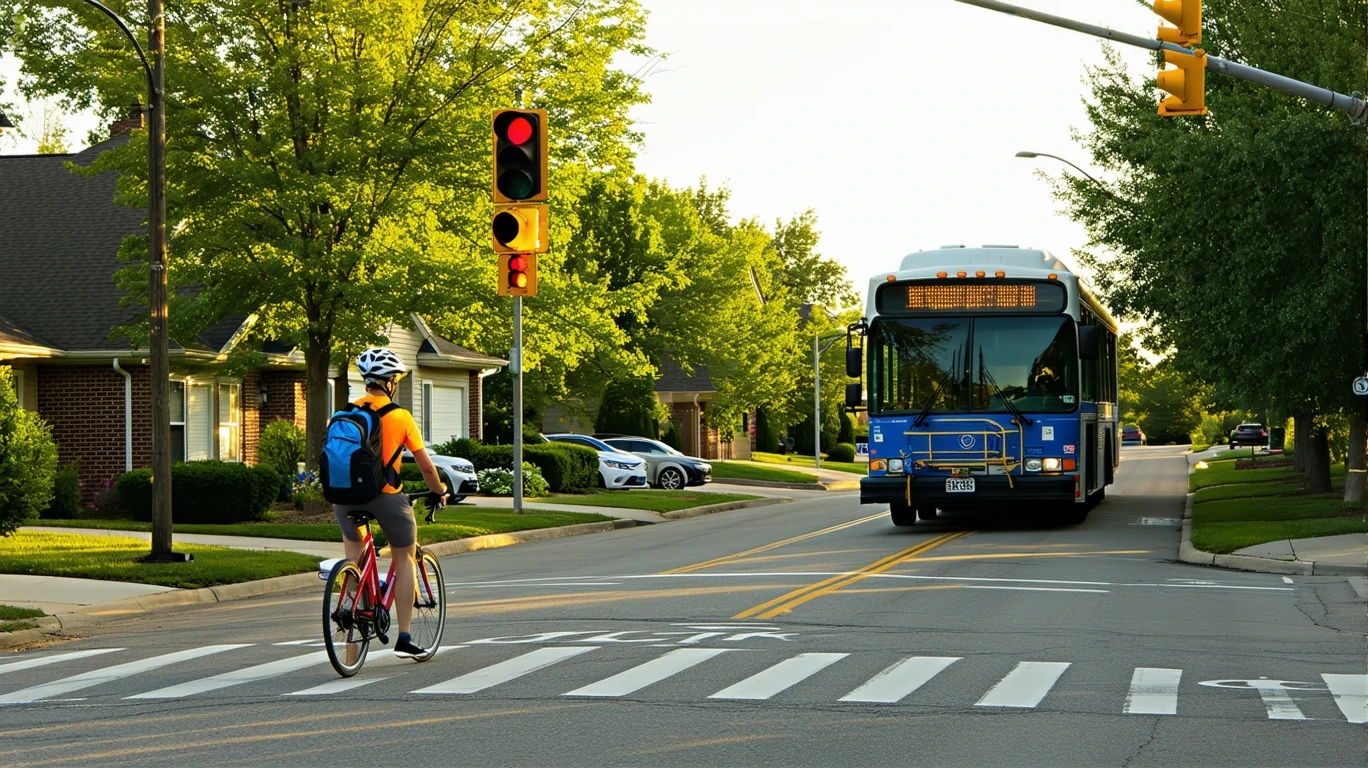When Jenna moved to Burnsville for a new job, figuring out the public transportation system was one of her first challenges. As a newcomer, she wanted to understand what her commuting costs would look like and how to navigate the routes efficiently. If you’re in a similar situation, this guide will break down the key things to know about public transportation costs in Burnsville for 2025.

What You’ll Spend on Transit in Burnsville
In many midsize U.S. cities like Burnsville, a standard bus ride costs around $2.00. Monthly passes in similar regions typically range from $60 to $100 depending on coverage. With a cost of living index of 115.6, overall expenses in Burnsville trend slightly above the national average, which can extend to transit and commuting.
A 30-day bus pass in Burnsville typically costs $72. This allows unlimited rides on local routes operated by the Minnesota Valley Transit Authority (MVTA). Express routes into downtown Minneapolis and St. Paul are also available, with fares ranging from $3.25 to $4.00 per trip depending on distance.
Getting Around Burnsville by Transit
Burnsville’s public transportation is primarily bus-based, with service provided by MVTA and Metro Transit. The city does not have direct light rail access, but many riders connect to the METRO Blue Line via express buses or park & ride lots.
Key transit options in Burnsville include:
- Local MVTA routes serving Burnsville and nearby suburbs
- Express commuter buses to downtown Minneapolis and St. Paul
- Park & ride lots for convenient connections to regional routes
While service is more limited compared to larger cities, Burnsville’s transit system does cover major corridors and employment centers. Buses typically run every 30-60 minutes on weekdays, with reduced frequency on evenings and weekends.
Monthly Cost Breakdown
To give you a sense of what you might spend monthly, here’s a cost comparison for three common commuting profiles in Burnsville:
| Rider Profile | Monthly Transit Costs |
|---|---|
| Weekday commuter (5 days/week) | $72 (local 30-day pass) |
| Weekend-only rider (8 trips/month) | $16 (8 local rides at $2 each) |
| Heavy daily rider (7 days/week) | $72 (local 30-day pass) |
Estimates reflect 2025 fares for standard adult riders. Actual costs may vary depending on discounts, pass types, and commuting frequency.
Is Public Transit Worth It in Burnsville?
Choosing between public transportation and driving often comes down to cost, convenience, and commute times. In Burnsville, the average bus commute is around 45 minutes, compared to 25 minutes by car. However, with gas prices at $3.50/gallon, taking transit can be cheaper than driving daily, especially when factoring in parking costs.
Walkability and transit frequency also vary by neighborhood. Areas like Heart of the City and Burnsville Center tend to have better bus access and sidewalk coverage. In Burnsville, public transit is often more cost-effective than driving for daily commuters, but less convenient for occasional trips or off-peak hours.
Ways to Save on Transit
Even with affordable fares, there are still ways to trim your transit spending in Burnsville:
- Buy a monthly pass if you ride regularly – you’ll break even after 36 trips
- Use free transfers to complete your journey on a single fare
- Check if your employer offers subsidized passes or pre-tax commuter benefits
- See if you qualify for discounted fares (seniors, students, riders with disabilities)
🏆 Tip: In Burnsville, using a monthly pass instead of single rides can save frequent commuters up to 20% per month.
FAQs About Transit in Burnsville
What’s the cheapest way to get around Burnsville using public transit?
For frequent riders, a 30-day local bus pass ($72) provides the best value. If you only ride occasionally, paying the $2.00 fare per trip is more economical than a pass.
How much does the average commuter in Burnsville spend on transit each month?
Assuming 40 trips per month (2 rides per weekday), the average Burnsville bus commuter spends around $72 monthly using a 30-day pass. Express bus riders who work in Minneapolis or St. Paul may spend closer to $120-$160 per month.
Does Burnsville offer park-and-ride lots or express buses for commuters?
Yes, Burnsville has several park & ride locations that connect with express routes to downtown Minneapolis and St. Paul. Popular lots include Heart of the City, Burnsville Transit Station, and Burnsville Center.
How does the cost of public transit in Burnsville compare to car ownership costs?
Factoring in gas, maintenance, and parking, driving in Burnsville typically costs $500-$800 per month. For most commuters, using public transit is significantly cheaper, with monthly passes ranging from $72 to $160 depending on route and distance.
What transit discounts are available for seniors, students, or riders with disabilities in Burnsville?
Both MVTA and Metro Transit offer reduced fares for seniors (65+), youth (6-12), and riders with disabilities. Eligible individuals can ride for $1.00 per trip on local routes, or purchase a discounted monthly pass for $36.
Getting Around Smarter in Burnsville
As Jenna discovered, public transportation in Burnsville is a budget-friendly option for daily commuters, with 30-day local passes costing $72. If you’ll be riding regularly to work or school, plan on spending $70-$80 per month – still a bargain compared to the $500+ monthly cost of car ownership.
Of course, transit isn’t the best fit for every lifestyle or neighborhood. If you value flexibility or live far from major bus routes, driving may be worth the added cost. Weigh your monthly expenses and housing costs to find the right balance for your Burnsville budget.
Whether you’re a daily bus rider or an occasional park & ride user, Burnsville’s transit system offers affordable ways to get around. The key is finding the pass option and routes that align with your commuting needs. With a little research and planning, you’ll be navigating the city like a pro in no time.
